- Administrator
- Albums and Singles
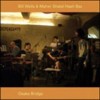 Scottish composer and pianist Bill Wells collaborates for the first time with Japanese group Maher Shalal Hash Baz, led by Tori Kudo. Wells shares his unadorned pop sensibilities with Kudo’s scruffy ensemble for a slightly off-kilter yet frequently sunny album.
Scottish composer and pianist Bill Wells collaborates for the first time with Japanese group Maher Shalal Hash Baz, led by Tori Kudo. Wells shares his unadorned pop sensibilities with Kudo’s scruffy ensemble for a slightly off-kilter yet frequently sunny album.
Many of the songs could have been themes for old sit-coms with their lackadaisically simple and optimistic melodic statements that evoke a mostly contented nostalgia. Yet a lot of their finer details are blurred by the wheezing horns of Maher Shalal Hash Baz. There are times when the group sounds like a high school marching band practicing for a big performance, which makes for some purposefully awkward moments. Sometimes slow to the beat and out of tune, it’s these imperfections that give the compositions their unique flavor.
Most of the songs are instrumentals, but not all. Kudo’s wife Reiko sings on “On the Beach Boys Bus” and “Time Takes Me So Back,” the melodies of which both came to Wells in dreams. Her voice is frail and light, lending the songs a tender, melancholic quality. Reiko does get a chance to lighten things up on “Cowtail Calypso,” dispelling some of the sadness before revisiting it in “On the Beach Boys Bus (Reprise),” which closes the album.
This disc does suffer a little from a sameness in approach on many of the songs, and the nostalgic elements are consistent reminders of a similar pop era, but the shortness of the tracks keeps them from wearing out their welcome. The collaborators prefer gauze to precision, and brevity to repetition. This combination produces an album that’s both familiar and surreal, and while not terribly long, still manages to make an impression on the psyche.
samples:
Read More
- Administrator
- Albums and Singles
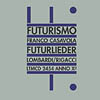 Futurism may have lost some of its futuristic appeal in the 100 or so years since its birth. That the works of a Futurist composer from the 1920s could sound so fresh may come as a surprise. Franco Casavola's compositions have little relation to the noisier side this movement is perhaps more famous for and that it does sound so fresh might be a testament to what Futurism stood for in the first place.
Futurism may have lost some of its futuristic appeal in the 100 or so years since its birth. That the works of a Futurist composer from the 1920s could sound so fresh may come as a surprise. Franco Casavola's compositions have little relation to the noisier side this movement is perhaps more famous for and that it does sound so fresh might be a testament to what Futurism stood for in the first place.
LTM
As fascinated as I am by early electronic music and by the use of noise as a musical element in any composition, the theories and conceptual framework developed by Filippo Tommaso Marinetti at the beginning of the 20th century never drew me firmly into the fold of Futurist thinking or electronic music. That it was almost undoubtedly tied to fascist politics also served to distance me from its machinations. The movement has undoubtedly influenced ensuing generations of artists and musicians, though. Just take a look at the cover for this album and the cover of New Order's Movement and the causal chain should become absolutely apparent (not to mention the robotic costumes that have been employed by various surrealist and dadaist innovators alike, all from the forward-looking artists of the Futurist era).
Franco Casavola represents a musically reserved and, dare I say, more classical approach to music: the Futurism in his work, though I am incapable of understanding Italian, must lay somewhere in the poetry and lyrics that make up much of this disc. Daniele Lombardi and Susanna Rigacci were employed to perform what were thought to be lost compositions from this Futurist-turned-anti-Futurist composer. Composed entirely of piano and Riggaci's lovely soprano voice, Futurlieder is a collection of different song cycles, advertising jingles (supposedly for Campari), cabaret pieces, and lyrical songs. Surprisingly, these are all pieces where the "experimental" aspects of the compositions are lost in the gentle wandering of idyllic piano and the powerful flow of high voices throughout. To my ears, anyone who can enjoy the pleasant talent of operatic performers and the simple ease of relaxing, solo piano pieces will enjoy this. I am by no means an expert of classical forms, styles, or theory, but this music is soft, gentle, and enjoyable in every aspect.
Casavola's real genius, then, would stem from his ability to write songs that have survived time just as well as the best classical composers. Unfortunately for supporters of Futurist ideals, that would mean any great composer of any era was Futurist in some sense, writing music resilient enough to survive long periods of times and severe changes in musical consciousness. Everything from his "Tango Viola da 'Cabaret Epilettico'" (a tango for an "Epileptic Cabaret") to his Tankas cycle is resonant with a playfulness that feels current and vibrant, alive despite its age. His poetic approach to topics, such as on his La Sera ("Evening") cycles, is always appropriate and harmonious, the concept matching the music superbly.
The liner notes provided by LTM are excellent, providing a competent, informative, and brief account of the composers life, works, and influences. An account of Casavola's literary work is also provided for anyone interested in the conventions and ideals he subscribed to. LTM's website contains a complete list of the music included on this disc as well as biographical information about this composer.
samples:
Read More
- Administrator
- Albums and Singles
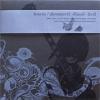 The eagerly awaited CD release of Dronevil doesn’t disappoint. Taking a leaf from The Flaming Lips and Neurosis’s respective books, this album is on two discs to be played simultaneously. Boris have done this trick immense justice: in the past multiple disc albums have been gimmicky but not so much here. One disc explores drones and the other sticks with Boris’s more straightforward guitar, bass and drum playing.
The eagerly awaited CD release of Dronevil doesn’t disappoint. Taking a leaf from The Flaming Lips and Neurosis’s respective books, this album is on two discs to be played simultaneously. Boris have done this trick immense justice: in the past multiple disc albums have been gimmicky but not so much here. One disc explores drones and the other sticks with Boris’s more straightforward guitar, bass and drum playing.
Inoxia
There is an 20 twenty minutes of music not found on the original LPs (40 if you’re playing the discs separately). The new piece, “Loose”/”Red,” opens the album. The piece is a slow burner, it takes nearly quarter of an hour for it to get going properly. On Disc Drone “Loose” is a shimmering drone that is mainly high pitched feedback and cymbals. “Red” on Disc Evil fills out the lower end of the sound with the band playing in a style similar to that found on Earth’s Hex album of last year. Combined it makes a powerful piece, separately they both lose their impact.
The next piece, “Giddiness Throne”/”Evil Wave Form,” doesn’t work as well as the first. The rock out disc is more beefed up but it doesn’t sync up with the drone disc as seamlessly as the first piece. “Evil Wave Form” on its own works perfectly well as a standard Boris riffathon. It’s only about halfway through when the overdrive is turned off that the drone fits in with the rocking out. Once the overdrive comes back on the drone goes through patches of sounding great and sounding annoying.
The final piece, “Interference Demon”/”The Evilone Which Sobs,” sees the two discs working great together again. Disc Drone contains a fierce sounding drone (again occupying the high end of the frequency spectrum) that is totally at odds with the subdued opening segment of “The Evilone Which Sobs.” When the piece kicks off it is face meltingly good. It’s well worth the hassle of moving the spare CD player into a position that you can hit play on both systems at the same time.
Dronevil –Final- is a cracking album but pointless if you’re not going to do it properly with two stereos. Even though the discs can be played separately, it’s only together that they shine. I suppose they could be mixed together but then the fun of having four speakers around a room blasting from different directions is lost.
samples:
- Evil Wave Form
- Interference Demon (play simultaneously with the mp3 below)
- The Evilone Which Sobs (play simultaneously with the mp3 above)
Read More
- Administrator
- Albums and Singles
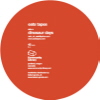 All-out silliness ensues the second this fine 12" starts spinning. Community Library has again proven their dedication to quality vinyl releases and Eats Tapes has proven that the liveliness and giddiness apparent during their live shows can be translated to a recorded format.
All-out silliness ensues the second this fine 12" starts spinning. Community Library has again proven their dedication to quality vinyl releases and Eats Tapes has proven that the liveliness and giddiness apparent during their live shows can be translated to a recorded format.
Community Library
"Dinosaur Days" is an all-out explosion of wiggling, analog bass and skittering percussion that had me on my feet the instant it began bumping. The robotic machinations of Gregory Zifcak's and Marijke Jorritsma's imagination and technology is more playful and more addictive on this 12" than anything found on their Sticky Buttons release and that's saying something. This is a two-sided release, though, and there's no reason to neglect that rubbery, balloon-like chaos of "Ptery D" or the more groove-oriented stagger of "Animal Minded." Eats Tapes like to stick to their four-on-the-floor formula, but the whacked-out tape manipulations and frantic melodies that splatter all over the walls defies categorization.
I had the chance to see them just recently on their Eats Coats tour and their live show was a energized burst of morphing synthetics and odd-ball distortion, much closer to what I'm hearing on this single than what's present on Sticky Buttons. There was a sense of child-like curiosity in their set and the random dancing of several patrons seemed to fit the innocent approach that was putting smiles on everyone's faces. If the fat, honking bass, unusual vocal samples, and even stranger musical deconstructions aren't enough to make even the most serious hipster smile, then I don't anything else will ever be capable.
samples:
Read More
- Administrator
- Albums and Singles
 On their fourth album, this instrumental quartet from Barcelona pushes the boundaries of jazz, blending classical elements with psychedelic touches, effects, and just plain strange explorations. The result is one of the best unclassifiable jazz albums I’ve heard in years.
On their fourth album, this instrumental quartet from Barcelona pushes the boundaries of jazz, blending classical elements with psychedelic touches, effects, and just plain strange explorations. The result is one of the best unclassifiable jazz albums I’ve heard in years.
Much of contemporary jazz seems relegated to the dinner club crowd and lite FM stations, with all of the cultural cache of an open mike poetry night at a neighborhood community center. That it was once America’s most popular music for many decades is hard to imagine in today’s culture of tedious pop ephemera. What used to be a progressive style stopped evolving ten or even twenty years ago by all appearances, and has since been claimed by nostalgia buffs seeking comfort in the familiarity of old songs “updated” by younger performers.
Yet apparently nobody’s told any of this to 12twelve, and for that I’m grateful. Even though they only have one horn in the group, a saxophone, they manage to encapsulate the best aspects of a variety of jazz styles, from classical jazz to bop and free jazz. The exemplary rhythm section keeps them grounded yet invigorated, while the sax frequently takes off into passages of soaring lyricism. Despite a few exceptions, I’m not normally a huge fan of guitars in jazz, but here it works well as it investigates musical horizons without the burden of leadership.
There are some rock-like moments, such as the tasteful wah used on “Profesor Ali” and “Il Monstro,” yet even these are handled expertly enough to add texture without removing the music from the jazz idiom. The group isn’t afraid to be weird, either, like the noisy and abstract “9è 4°” or the electronics and anxiety of “R2 Chapa.” A couple of the songs even start with overheard conversations, at times lending the disc a casual and relaxed atmosphere. The album has enough differences between songs, and sometimes with plenty of changes within the songs themselves, that there isn’t a dull moment to be found. The emotions follow suit in a wide range of expression that never bores. Likewise, their vigorously imaginative and skillful efforts here go a long way toward revitalizing the genre, bringing to it a youthful energy and lack of compromise that hasn’t been evident for far too long.
samples:
Read More
- Administrator
- Albums and Singles
 If early '90s sounding techno happens not to be your thing you’re unlikely to enjoy the majority of this release. Tagged as ‘remixes and reconstructions’ from Danny Hyde’s (Coil member and remixer) Aural Rage project, this harks heavily back to the last decade’s commercial electronic music. Some of this could very easily be passed off as having been taken from charting releases of that era, and this is sort of a backhanded compliment to Hyde.
If early '90s sounding techno happens not to be your thing you’re unlikely to enjoy the majority of this release. Tagged as ‘remixes and reconstructions’ from Danny Hyde’s (Coil member and remixer) Aural Rage project, this harks heavily back to the last decade’s commercial electronic music. Some of this could very easily be passed off as having been taken from charting releases of that era, and this is sort of a backhanded compliment to Hyde.
Some of the sounds and styles on here sound like they really do belong back there. For example, the five tracks featuring Joanna De Seyne’s vocals are a little too thickly voiced, a little too techno diva and safe sounding for the world of 2006. Having never been fully seduced by Hyde’s Love’s Secret Domain Coil-era work, it’s understandable that a lot of this should be passing by me. Perhaps without the remixing efforts of DJ Poltergeist and MC Ramification (whom I’m starting to convince myself are only Hyde pseudonyms anyway), this might be a little more rough and edgy.
When it does slip away from the grips of the remixers (according to the credits), as on "Hippy Cult Leader (Intro)"or "I Don’t Need That Deviant Sex Thing (Calm Before the Porn Edit)", it seems that little bit more human. Inventive and restless without being too dense, they manage to carry that baggage of yesteryear without sounding like they were recorded in it. On the plus side there seems to be a lighter touch to Sinsemilla Dreams than there was on A Nature of Nonsense, this appearing less noticeably layered. These tracks seem to be more jagged, and in the case of the latter song is instilled with a motionless melancholy; the title becoming more of a realisation than a rehashed eighties punch line.
Those wondering how the remixed tracks with Jhonn Balance worked out this time ("FJ Nettlefold" is versioned here twice) may be interested to hear that while one take is harsher and the other is squelchier, neither are as good as the original. Hopefully Sinsemilla Dreams is just a brief remix project stopgap along the way to the next album.
samples:
- Argento Meets the Skinheads (Black Zodiac Mix)
- FJ Nettlefold (Radar Angels Mix)
- I Don’t Need That Deviant Sex Thing (Calm Before the Porn Edit)
 
Read More
- Administrator
- Albums and Singles
 All the pieces on Patherns are composed of rhythmic noises that at the right kind of party at the right time could get the crowd dancing. The four pieces on this EP are less abstract than Ivan Pavlov’s more recent work; there is less chin scratching here than on this year’s Above Air album. Unfortunately there’s less depth to Patherns, enjoyable as it is.
All the pieces on Patherns are composed of rhythmic noises that at the right kind of party at the right time could get the crowd dancing. The four pieces on this EP are less abstract than Ivan Pavlov’s more recent work; there is less chin scratching here than on this year’s Above Air album. Unfortunately there’s less depth to Patherns, enjoyable as it is.
Raster Noton
All four of the tracks are quality stuff. All are based around simple rhythms with various noises and counter rhythms layered on top. It's deceptively simple at the surface, but there’s a lot of background detail that only reveals itself after a few listens. The first half of the CD is pleasant enough but neither of the first two tracks sticks out as being memorable.
The EP definitely peaks on “Path. #3 (Dynamo Baby, Bore me Numb)” (probably why Pavlov gave it a title and not just another number). Here, a solid rhythmic base is paired with an airy synth melody reminiscent of some of Kraftwerk’s Tour de France melodies. It flows along nicely as Pavlov chops and changes it, stopping it from becoming stagnant. It leads into “Path. #4,” which sees Pavlov manipulating some basic rhythm sequences slowly, sounding like commercial dance music with a lot more bite.
Patherns is neither his best nor his worst work but it is a worthy effort by Pavlov. It was surprising to see an EP by him so soon after the last album, especially considering it wasn’t just a bunch of outtakes from the same sessions. It could have been far more prosaic but the accessibility of the material made the EP worth listening to. Unfortunately I don't think this has the longevity to keep me coming back to it.
samples:
Read More
- Administrator
- Albums and Singles
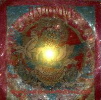 Stefan Knappe's (Maeror Tri, Troum) new label, Substantia Innominata, has released three 10" records, two of them this year. Asianova's creeping, dark drones occupy this particular limited run of pink, red, and white marble vinyl. The music is deep and cavernous, resonating in giant swirls and bringing to mind the most unusual and supernatural of ghost stories.
Stefan Knappe's (Maeror Tri, Troum) new label, Substantia Innominata, has released three 10" records, two of them this year. Asianova's creeping, dark drones occupy this particular limited run of pink, red, and white marble vinyl. The music is deep and cavernous, resonating in giant swirls and bringing to mind the most unusual and supernatural of ghost stories.
Substantia Innominata
Drone Records have always released high quality music with the greatest of care and Knappe's new label, which focuses only on 10" releases, continues that tradition of care and excellence. Asianova consists of Ure Thrall (from Voice of Eye) and Pamela Passmore; this album also includes guest musicians Paul Valsecchi and Marlon Porter. I was happy to see that this quartet got right to the point on their sleeve. Without a doubt Asianova seeks to "create music about the intangible" and to connect the external world with the internal world in a meaningful way. This may seem like an ambitious project, but I've always been of the opinion that music, especially drone and rather non-temporal or anti- temporal music, is capable of exactly this.
The title might mean something like "book of ultra-memory" or "record of high memory" and the washes of rattles, chimes, and low tones that flow out of the speakers certainly sound ancient, informed by a universal memory of the cosmos and the stars. The artwork includes celestial references, further suggesting that the group is trying to bring the universe home to us, or perhaps us home to the universe. Some songs, though they flow into each other on both sides, feature of a heavy emphasis on percussion with synthetic waves groaning over heavily distorted and washed out beats, all of them focused almost entirely on the bass end of the spectrum. Vocals light up the music at various points, though those points are thematically grim sounding and brief. Each side makes sense as a whole, though they start in similar ways. The "Mnemo" side, however, grows in stature much more quickly than the "Magna" side, sounding off with insectoid horns and reversed vocals. The effect is haunting and relaxing simultaneously. Asianova have a tendency to quickly bring new sounds and surprises into their music quickly and without warning, keeping me from calling this album relaxing altogether. There is a palatable tension in the air and the play of deep, low sounds and other effects keeps the record moving at a pace that seems to stop time: the record is over before I know it.
The record has been spinning on the player for three straight rotations, now, and I'm still picking up small nuances the group has buried in their music. There's plenty to hear on this disc and furthermore the entire package is so well defined and so immaculately thought out that I can't help but fall in love with it. Perhaps this is music with a purpose, music not designed solely for entertainment, but that doesn't confine it to purely academic or purely meditative music. It's enjoyable on an aesthetic level, but the personal and spiritual material it brings to the table is the main course that draws me in the most.
Read More
- Administrator
- Albums and Singles
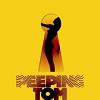 After years of living as a rumour, Mike Patton has finally unleashed his Peeping Tom project. Firmly rooted in hip hop and overcrowded with special guests, the first of two planned albums is disappointingly average. The album has its peaks and troughs; granted the highs are high indeed but too much of the disc is kooky hip hop by numbers.
After years of living as a rumour, Mike Patton has finally unleashed his Peeping Tom project. Firmly rooted in hip hop and overcrowded with special guests, the first of two planned albums is disappointingly average. The album has its peaks and troughs; granted the highs are high indeed but too much of the disc is kooky hip hop by numbers.
When I first heard the Peeping Tom album I thought it was great. I listened to it several times in a row, marvelling at how Patton had nailed what good pop should be. I then took a break from listening to it for a few weeks and when I went back it had lost a lot of its sheen. So Patton hasn’t quite nailed perfect pop, it should get a listener involved every time. Most of the songs are average with moments of brilliance. For example on “Don’t Even Trip” there is little of interest throughout the song, the music is passable but the vocals are dull apart from the superb chorus (which starts with a lyric that has Patton written all over it: “I know that assholes grow on trees but I’m here to trim the leaves”).
“Five Seconds” is a strong and promising start to the album. The music is groovy and instantly accessible (not a quality much of his music has possessed). Patton’s singing is user friendly but peppered with a few curveballs to keep me on my toes. It’s nowhere near his best work but as a pop song it works, if more songs sounded like this on the radio I might consider turning the damn thing on. Unfortunately they don’t sound like this and even the rest of the album doesn’t keep to the same level of quality. For every decent song like “Your Neighborhood Spaceman” and “Kill the DJ” there is a “Getaway” and a “Caipirinha.” Apparently Patton has enough Peeping Tom to make two albums but he would have been better making one album using the best of both (provided there are more good songs among those not yet released).
I don’t know what I was expecting Peeping Tom to sound like but I was expecting better after the amount of time that has gone into bringing it about. I know it wasn’t meant to be challenging like Fantomas but I thought it might be less middle of the road. Guests like Kool Keith who I expected to bring a lot to the table were a disappointment. On the other hand, Patton has teased out some good sounds from Massive Attack (who gave up being interesting a long time ago).
When the album finishes with “We’re Not Alone” I am reminded of why I like Mike Patton. I like the vocal gymnastics and sense of adventure that many of his other projects are full of. Ironically these qualities are absent from this last song (and much of the album), it is more in the vain of Faith No More who were boring and far too safe. I hope once Patton gets this return to mediocrity out of his system and comes back with something new to blow me away.
Read More
- Scott Mckeating
- Albums and Singles
Described by the label itself a “live goof nonsense”, this is a mixture of travelogue, unintentional stand-up and sound check banter. But where last year’s Live at East Banfields Wolf Eyes release was spoken word comedy, this mixes up that formula with musical interludes.
These pieces aren’t mini-disc leftover jams either, they are prime cuts from (I believe) Wolf Eyes, John Olson and Graveyards; it’s these tracks that makes this CD-R worth trawling the net for. Recorded in and around, and on the way into Delaware, the non-musical parts aren’t exactly essential, but stir a few laughs past a handful of listens. The Cockerel-in-studio shenanigans of “Four” or “Six”s odd hybrid of melancholy piano piece and The Police are obviously the exceptions to this rule.
The six minute “Two” takes shredded power electronics to the point where you can hear holes being bored into the floor of the venue. Spilling spools of corrupted magnetic tape from their battered suitcases, riffs are spat out and brutally wronged in front of the audience.
At 20 minutes long the closer casts a low long shadowy silhouette over Del-War Showdown’s comedy moments. This hollow shelled monster of a track flickers down the slow burning fuse, a rotating rasp whining and grinding taking hold of the low end. This piece shifts into something more in line with the UK underground, like a freshly dug-up psych side, its long drawn melodies floating away lazily. The whole shebang ends in an audience screaming themselves ill; Delaware sounds like a pretty wild place.
Read More
- Lucas Schleicher
- Albums and Singles
Matt Waldron and Allan Zane should have talked about making these two songs available as MP3 downloads. They're both slices of strange and organic noise that I've come to love, but I'm not sure they needed a limited run 12" and 7" record to themselves. The limited run has long been sold out; it was only 33 copies large and featured limited edition artwork from Matt Waldron and is also signed. The standard edition features printed artwork and the same two songs, but isn't signed. There's absolutely no need to press an extra 300 copies of this release when both songs could've been made available for download. The songs are both interesting, but I'm not sure how often I'd put them on just to hear them.
It's not that I think the songs aren't worthy of a physical format like vinyl, but digital media would serve both these songs much better. They're brief compared to the typical Irr. App. (Ext.) composition and their relation is tangential at best. The printed artwork is nice, but could easily be downloaded. As far as the music itself is concerned, it's hard to determine exactly how "Hypothetical Tardigrade Resurrection #1" is related to the other songs of the same name from Waldron's Perekluchenie album and Wyrm's work, which I'm mostly unfamiliar with, is entirely unlike anything I've heard from Irr. App. (Ext.). Wyrm, made up of Zane, Terry Stalcup, John Murphy, and Kensaku Nishizato (who appeared on Nurse with Wound's An Awkward Pause) has a metallic focus that brought Organum to mind almost immediately. Their work, however, slowly becomes more distinct with the addition of other textures, like alarm clocks, bells, cricket-like noise, voices, and brushes. "Labyrinth Defector" is very involved composition featuring layers of sound, but I'm not sure I'd be tempted to put this on the record player just to hear it.
Had these been made available in a digital format, I think they'd find their way into my play lists, but as it stands I think I'll be putting on full-length recordings from both these bands, instead.
Read More

